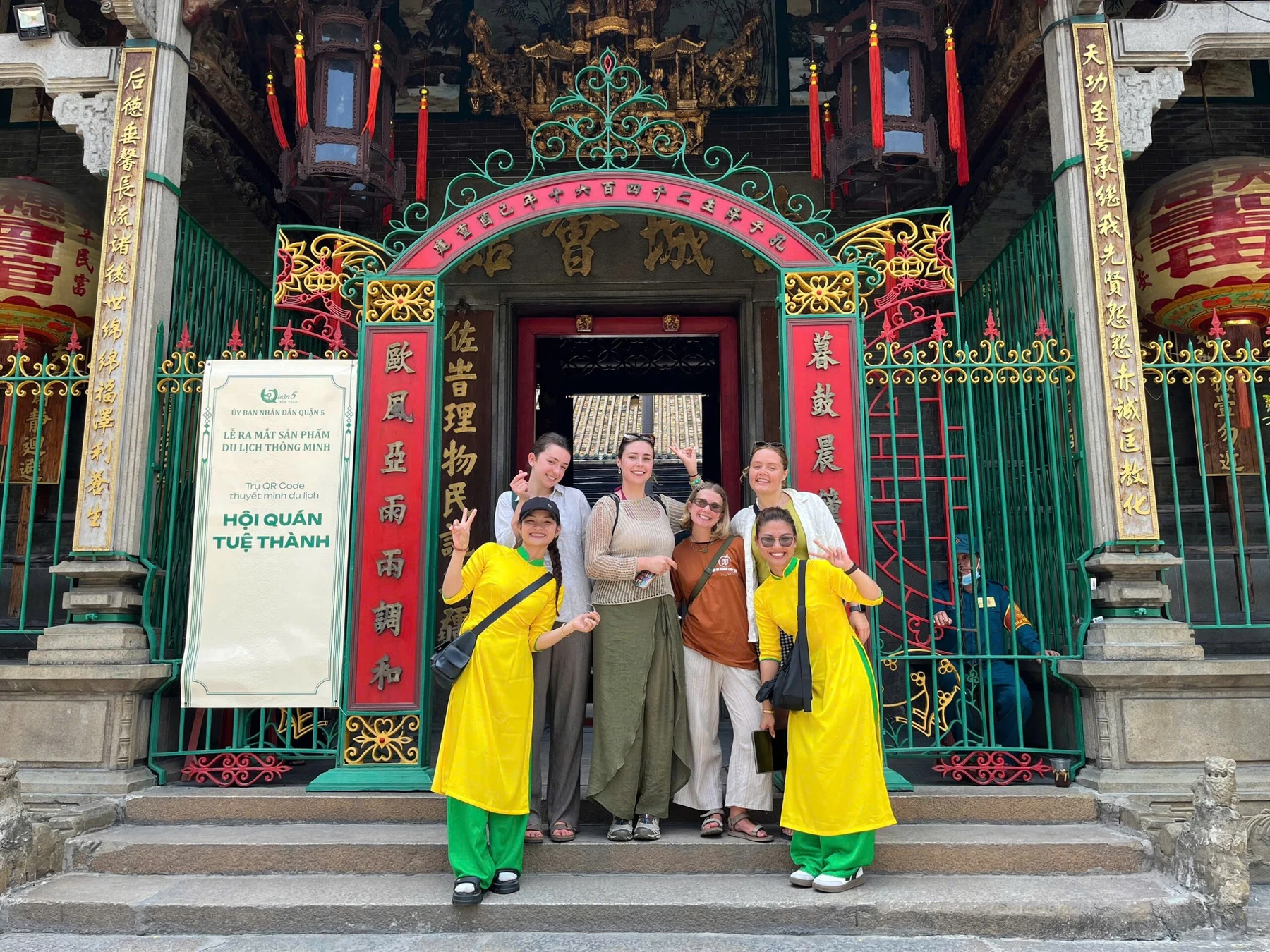The U.S. Embassy in Saigon Before 1975: A Symbol of Wartime Diplomacy

During World War II, the United States did not yet have an official consulate operating in Saigon. Instead, its presence was mainly through military activities and informal diplomatic contacts. After the war, in 1946, the U.S. established a representative office in Saigon to strengthen relations with the French government, which was then in control of Indochina.
Formation and Development of the U.S. Embassy Before 1975
The U.S. Embassy in Vietnam had a remarkable history of establishment and development before 1975. After Vietnam gained independence from French colonial rule, the United States began to establish diplomatic relations with the government of the Republic of Vietnam.
On June 17, 1950, the U.S. Embassy in Saigon was officially established, marking the beginning of a strong diplomatic presence in South Vietnam.
1950 – 1965: Strengthening Presence
During this period, under the leadership of President Ngo Dinh Diem, the U.S. increased its military and economic support for the Republic of Vietnam. The embassy became the central hub for coordinating U.S. military and political activities in South Vietnam. In 1965, as the Vietnam War escalated, the United States decided to upgrade its consulate to a full embassy, with a new building constructed at 4 Thong Nhat Boulevard (now Le Duan Street), Saigon.

The embassy was designed by architect Ralph Rapson, notable for its modern style and advanced security features. The building had a solid structure with thick concrete walls, narrow windows, and a modern security system that included guard posts and stationed security personnel. The total construction cost reached 2.6 million USD, and at the time, it was considered one of the most heavily guarded U.S. embassies in the world.
1965 – 1975: Peak and Decline
During this period, with increasing U.S. military intervention and political activities in Vietnam, the consulate became a fully operational embassy with maximum security measures amid the tense wartime situation. The growing American military presence and millions of dollars in aid poured into Vietnam. The U.S. Embassy served not only as the workplace for diplomats but also as a command center for U.S. military operations.

After the Paris Peace Accords in 1973, the U.S. gradually reduced its military presence but still maintained a significant number of diplomatic staff and CIA operatives at the embassy.
In April 1975, as liberation forces advanced into Saigon, the embassy became the focal point of an emergency evacuation. On April 29, 1975, images of desperate civilians and American personnel seeking refuge on the rooftop of the embassy became a lasting symbol of the failure of U.S. military intervention in Vietnam. On April 30, 1975, when Saigon officially fell, the embassy closed its doors, marking the end of a chapter in U.S.–Vietnam relations.


Post – 1975 Period
After 1975, when Vietnam was reunified, the U.S. Embassy in Saigon was closed and transferred to the new government. It was temporarily used as the headquarters of PetroVietnam, but by 1980, the building no longer had a clear function and fell into deterioration.
In 1995, after the normalization of diplomatic relations between the United States and Vietnam, a new consulate was built in Saigon. The old embassy building no longer met modern requirements and standards, and it was replaced with the new U.S. Consulate that stands today.

Conclusion
The history of the U.S. Embassy in Saigon before 1975 reflects not only America’s deep involvement in Vietnam but also the rise and fall of its influence during the war. From its establishment in 1950 to the dramatic evacuation in April 1975, the embassy stood as both a symbol of U.S. diplomatic power and a reminder of the limitations of military intervention. Although the old embassy no longer exists, its legacy remains an important chapter in the complex history of U.S.–Vietnam relations.
Book a Once-in-a-Lifetime Experience with us
OUR EXPERIENCES
Ao Dai Motorbike Tours Cu Chi Tunnels Excursions Ho Chi Minh Day Trips, and Combos Mekong Delta Adventures Saigon: Culture & History Saigon Street Food Southern Vietnam Coastal Adventures Taste Of Saigon Tours
Don’t leave just yet—stay with us a bit more!



Leave a Reply